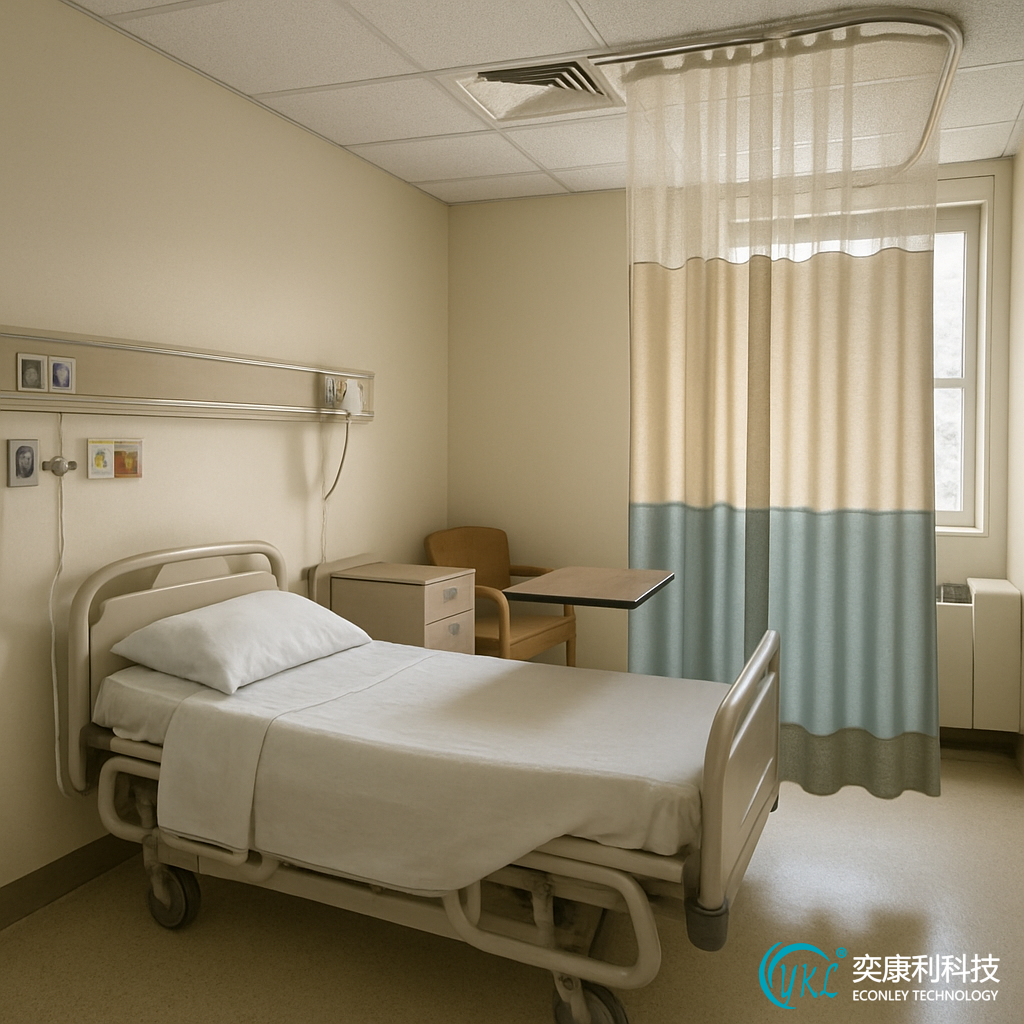 Service Hotline:13510328459
Service Hotline:13510328459
 205-206, 2nd Floor, Building 2, Xiazao Village Industrial Zone, Gaofeng Community, Dalang Street, Longhua District, Shenzhen City
205-206, 2nd Floor, Building 2, Xiazao Village Industrial Zone, Gaofeng Community, Dalang Street, Longhua District, Shenzhen City
 Service Hotline:13510328459
Service Hotline:13510328459
 205-206, 2nd Floor, Building 2, Xiazao Village Industrial Zone, Gaofeng Community, Dalang Street, Longhua District, Shenzhen City
205-206, 2nd Floor, Building 2, Xiazao Village Industrial Zone, Gaofeng Community, Dalang Street, Longhua District, Shenzhen City
Time:2025-10-16 Preview:
In the bustling environment of a hospital, patient privacy is a fundamental concern. The need for privacy in medical settings goes beyond mere comfort; it's about dignity, respect, and confidentiality. A small hospital bed privacy curtain plays a crucial role in ensuring these values are upheld.
Privacy in healthcare settings is not only a matter of respect but also a legal requirement. Patients deserve confidentiality regarding their medical conditions and treatments. When patients feel their privacy is protected, they tend to be more open and honest with healthcare providers, leading to better outcomes.
Privacy curtains are an essential component in hospitals and medical facilities. They serve multiple purposes:
Patient Dignity: Curtains offer a barrier between the patient and the rest of the room, allowing them to change clothes or discuss sensitive health information without feeling exposed.
Confidential Conversations: A curtain provides a sense of seclusion, which is crucial when medical professionals need to discuss treatment plans or diagnoses with patients.
Infection Control: Modern privacy curtains are often designed with antimicrobial properties, contributing to infection control efforts in hospitals.

Small hospital bed privacy curtains are designed with specific features to cater to the demands of a healthcare environment.
These curtains are tailored to fit snugly around small hospital beds. They ensure complete coverage, maximizing privacy without taking up unnecessary space. This is particularly important in smaller hospital rooms or wards where space is limited.
The material of privacy curtains is chosen for its durability and ease of maintenance. Often made from polyester or a similar fabric, these curtains are designed to withstand frequent washing and handling. They are also treated to be flame retardant and resistant to wear and tear.
Given the importance of infection control in hospitals, many privacy curtains are treated with antimicrobial agents. This reduces the risk of bacteria and viruses lingering on fabric surfaces, contributing to a safer environment for both patients and healthcare workers.
Small hospital bed privacy curtains are designed for ease of use, with smooth gliding tracks or hooks that allow for quick and effortless operation. This is particularly beneficial in emergency situations where healthcare providers need to access patients swiftly.

When selecting a privacy curtain for a hospital or medical facility, several factors should be considered:
It's essential to ensure that the curtain's size and attachment system are compatible with the existing infrastructure of the hospital room. This includes checking the height and width requirements and the type of curtain track or rod in place.
Investing in high-quality curtains made from durable materials can save costs in the long run. While they might be more expensive upfront, they will require less frequent replacement and maintenance.
While functionality is paramount, the visual appeal of privacy curtains should not be overlooked. Curtains in soothing colors and patterns can contribute to a calming environment, which is beneficial for patient recovery and well-being.

Regular maintenance of privacy curtains is crucial to ensure they remain effective and hygienic.
Hospitals must establish strict cleaning protocols for privacy curtains. Regular laundering, using the appropriate detergents and temperatures, is necessary to remove any potential contaminants. Many healthcare facilities opt for curtains that can be easily removed and machine washed.
Routine inspections should be conducted to check for signs of wear and tear. Curtains with visible damage or those that no longer meet safety standards should be promptly replaced.
The evolution of privacy curtain design has introduced several innovations aimed at improving patient care and facility management.
Disposable curtains offer a convenient solution for maintaining hygiene. Made from recyclable materials, these curtains can be replaced after each patient, reducing the risk of cross-contamination.
Technology has also found its way into privacy curtains, with some manufacturers offering "smart" versions equipped with features like electronic sensors that can alert staff when a curtain needs changing.
Small hospital bed privacy curtains are an indispensable component of patient care in medical facilities. They uphold the principles of dignity, privacy, and infection control, all while being easy to use and maintain. By selecting the right curtains and implementing robust maintenance practices, hospitals can ensure a safe and respectful environment for their patients.
Whether it's through traditional fabric curtains or innovative disposable and smart options, the role of privacy curtains remains a cornerstone in the provision of quality healthcare.
In conclusion, the choice of a small hospital bed privacy curtain should be made with careful consideration of quality, compatibility, and hygiene standards to support the overarching goal of patient-centered care.
